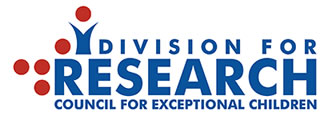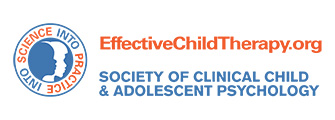
When a parent or caregiver learns that their child is self-harming or has friends who do, they are likely to feel scared, helpless, or confused. They may not know what to say to their child or how to best support them. This blog post contains information about self-harm, strategies to guide conversations with youth about self-harm, and resources to support your child and family.
What is self-harm?
Self-harm is also known as self-injury, self-abuse, or non-suicidal self-injury. Self-harm happens when people hurt themselves on purpose without meaning to kill themselves. Importantly, most of the time self-harm is NOT a suicide attempt.
Types of self-harm include:
- Cutting of the skin
- Burning of the skin
- Excessive scratching of the skin or preventing wounds from healing
- Banging head into hard objects
- Hitting or punching themselves
- Pulling their hair
- Eating or drinking small amounts of harmful substances
Why do youth self-harm?
There is no single reason youth engage in self-harm, though most children and teenagers will say they use self-harm as a strategy to cope with strong emotional pain, such as sadness, irritability, or anxiety.
Other reasons youth may self-harm:
- Decrease distressing thoughts – “It helps me get my mind off my problems”
- Gain control – “I feel so overwhelmed” or “It helps me focus”
- Feel excitement – “Otherwise I just feel empty and numb”
- Self-punishment – “I deserve it”
- Stop dissociative experiences – “It makes me feel real and grounded”
- Social support – “Others can see my pain and they want to help me”
- Decrease demands – “When my parents know I am hurting they back off”
How common is self-harm?
We know that the rates of self-harm have increased quite a bit over the past decade. Estimates vary, but somewhere between 30-50% of youth engage in self-harm one time. Approximately 15-20% of youth repeatedly self-harm. The average age of first self-harm is around 13 years-old. Self-harm tends to decrease in frequency in young adulthood.
Youth of all genders engage in self-harm with girls being more likely to cut their skin and boys being more likely to hit themselves. Sexual and gender minority youth are at particularly high risk of self-harm.
How can I tell the difference between self-harm and suicidal behavior?
Self-harm is performed with little or no intent to die and the bodily harm is often shallow and non-lethal. Suicidal behavior is often performed with some or full desire to die and the bodily harm is potentially lethal. The difference can be difficult to distinguish and enlisting the help of a mental health professional or medical provider can give you peace of mind.
Does self-harm lead to suicide?
Most self-harm comes from a temporary need to escape rather than a wish to die. However, research suggests that youth who repeatedly self-harm have higher rates of suicidal thinking and dying by suicide than their peers who do not self-harm. Research has shown that youth who self-harm and are socially isolated and think they are a burden to their loved ones are at particularly high risk of suicide.
Myths about self-harm
There are several misconceptions about self-harm that may cause parents or caregivers to ignore this concerning behavior.
Myth #1: If I ask my teen about self-harm, they may be tempted to try it.
This common myth may make parents and caregivers scared to confront their child’s concerning behavior. Research shows that talking openly about self-harm does NOT increase a child or teen’s desire to try self-harming. In fact, conversations about self-harm are shown to decrease the behavior by improving youth engagement in mental health care.
Myth #2: Youth who self-harm are just looking for attention or being dramatic.
For most youth, self-harm is a relatively private behavior. Even when self-harm is used to gain support and concern from family and friends, the acts should be taken seriously. Self-harm is almost always a result of strong emotional pain and an indication that the youth is in need of help.
Myth #3: Cutting is the only form of self-harm to worry about.
All forms of self-harm are concerning for several reasons:
1) Using any form of self-harm as a coping strategy for emotional pain prevents youth from practicing other, more appropriate coping strategies.
2) Self-harm can become habitual and hard to stop over time.
3) All forms of self-harm help youth get used to causing their bodies physical pain. This, in turn, may make them more prepared to make a suicide attempt. Experts use the term “acquired capability” to explain the link between a person’s repeated exposure to harm and later suicidal behavior.
Warning signs
Cutting is the most common form of self-harm so you might see cuts or scars on your child’s wrists, forearms, stomach, legs, or other areas of their body. Youth may inflict deep cuts or many small cuts in one spot. Other forms of self-harm may leave bruises, scratches, or burn marks on the skin. Youth may hide their injuries by wearing jewelry, long sleeves, or pants (even in warm weather), so the warning signs are not always readily visible.
It is important to watch for symptoms of depression, such as sad or irritable mood, sleep changes, eating changes, low energy, and feelings of hopelessness. This is because teens who have depression are at higher risk of self-harm.
How can I help my child?
potentially lethal. The difference can be difficult to distinguish and enlisting the help of a mental health professional or medical provider can give you peace of mind.
Does self-harm lead to suicide?
Most self-harm comes from a temporary need to escape rather than a wish to die. However, research suggests that youth who repeatedly self-harm have higher rates of suicidal thinking and dying by suicide than their peers who do not self-harm. Research has shown that youth who self-harm and are socially isolated and think they are a burden to their loved ones are at particularly high risk of suicide.
Myths about self-harm
There are several misconceptions about self-harm that may cause parents or caregivers to ignore this concerning behavior.
Myth #1: If I ask my teen about self-harm, they may be tempted to try it.
This common myth may make parents and caregivers scared to confront their child’s concerning behavior. Research shows that talking openly about self-harm does NOT increase a child or teen’s desire to try self-harming. In fact, conversations about self-harm are shown to decrease the behavior by improving youth engagement in mental health care.
Myth #2: Youth who self-harm are just looking for attention or being dramatic.
For most youth, self-harm is a relatively private behavior. Even when self-harm is used to gain support and concern from family and friends, the acts should be taken seriously. Self-harm is almost always a result of strong emotional pain and an indication that the youth is in need of help.
Myth #3: Cutting is the only form of self-harm to worry about.
All forms of self-harm are concerning for several reasons:
1) Using any form of self-harm as a coping strategy for emotional pain prevents youth from practicing other, more appropriate coping strategies.
2) Self-harm can become habitual and hard to stop over time.
3) All forms of self-harm help youth get used to causing their bodies physical pain. This, in turn, may make them more prepared to make a suicide attempt. Experts use the term “acquired capability” to explain the link between a person’s repeated exposure to harm and later suicidal behavior.
Warning signs
Cutting is the most common form of self-harm so you might see cuts or scars on your child’s wrists, forearms, stomach, legs, or other areas of their body. Youth may inflict deep cuts or many small cuts in one spot. Other forms of self-harm may leave bruises, scratches, or burn marks on the skin. Youth may hide their injuries by wearing jewelry, long sleeves, or pants (even in warm weather), so the warning signs are not always readily visible.
It is important to watch for symptoms of depression, such as sad or irritable mood, sleep changes, eating changes, low energy, and feelings of hopelessness. This is because teens who have depression are at higher risk of self-harm.
How can I help my child?
Have the conversation
- Do not shy away from asking your child if they are engaging in self-harm or if they know others who do. Some families choose to have a regular time, such as once monthly, when they come together to check-in about mental health. When conversations are held regularly they do not feel as intimidating.
- If you do not know where to start, here are some suggestions:
- “I have noticed you seem down/stressed/irritable lately and I am concerned about you.”
- “I have been reading about how some children/teens are using self-harm to help their strong feelings. I want to check in with you about whether you have tried this or if you have friends who do this.”
- When youth talk about self-harm, they may feel fear or shame and they may react strongly. Try to take a non-judgmental approach and listen more than you talk.
- Express your love and concern. Say, “I care about you and want you to be healthy and safe.”
Seek professional help
A good place to start is with your child’s primary care medical provider. Doctors who focus on child and adolescent health often know about self-harm. Your child’s provider can work with you and your child to create a care plan geared toward your child’s needs, which might include mental health therapy, medication, or other steps that have been shown to help youth who self-harm.
Make your home a safer environment
You can help your child be safe by removing dangerous items from the home, such as razors, sharp knives, poisons, weapons, and medications. If removal is not possible, consider locking these items away so only caregivers control their use. Limiting access to dangerous items is called “means restriction.” When family restrict means for self-harm, youth have a more difficult time engaging in self-harm impulsively or without planning. They may then opt to use or learn more appropriate coping skills instead.
Rethink social media use
Social media may not be a direct cause of self-harm, but excessive screen time has been linked to poor sleep and powerful feelings of jealousy and social rejection. These issues can directly contribute to depression and put a child at risk for self-harm. Parents’ and caregivers’ electronics use matters, too! Adult time spent on social media limits the amount of time spent on activities that promote emotional closeness as a family. You may wish to consider taking time to develop a healthy family media plan. A helpful online tool is linked here: AAP Media Plan (healthychildren.org)
Resources for your family
This infographic teaches families helpful facts about self-harm and other ways to cope using an easy-to-read visual format.
http://www.selfinjury.bctr.cornell.edu/perch/resources/siinfo-2.pdf
The Trevor Project has a website designed to provide support for recovery for individuals that self-harm, including resources for youth and families.
https://www.thetrevorproject.org/resources/article/support-for-self-harm-recovery/
For help finding a mental health therapist in your area, consider using this website from Society of Child and Adolescent Psychology.
https://effectivechildtherapy.org/tips-tools/locate-a-psychologist-near-you/
Proper Citation for this blog post:
Stephens, H. F. (2024, January 26) How to Talk to Youth About Self-Harm. Retrieved from https://infoaboutkids.org/blog/talking-to-youth-about-self-harm
















